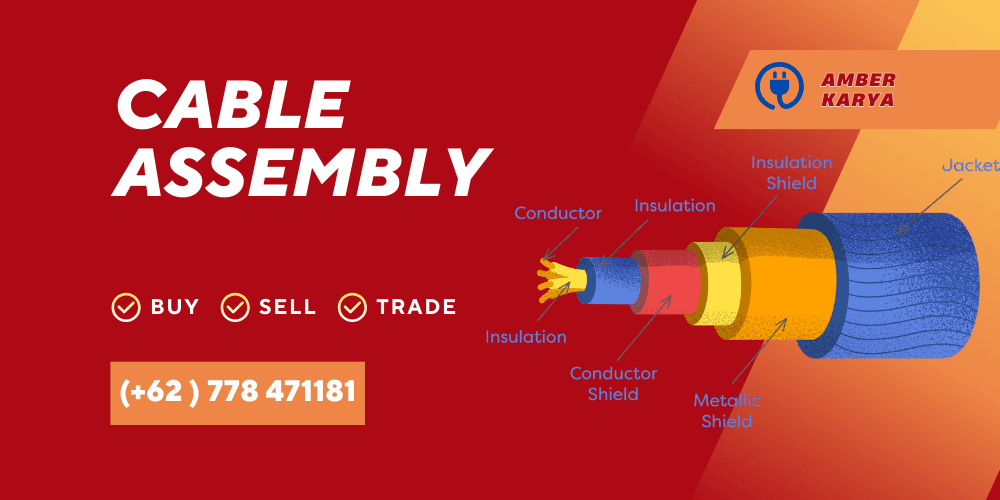Have you ever wondered how wireless communication works or how devices like your Wi-Fi router, TV antenna, or even radar systems stay connected? Well, one of the key components behind this magic is something called a cable assembly indonesia for radio frequency (RF). Let me break it down for you in a simple and easy way.
What Is RF Cable Assembly?
At its core, an RF cable assembly is a special type of cable designed to transmit high-frequency signals (radio frequency signals). These cables are crucial in systems where stable and clear signal transmission is a must. Think about your smartphone’s connection to a cell tower or how a satellite communicates back to Earth. These scenarios rely on RF technology.
RF cable assemblies aren’t just “ordinary cables”. They’re engineered to handle specific frequencies while minimizing signal loss and interference. They’re commonly used in industries like telecommunications, aerospace, defense, and even consumer electronics.
Key Components of an RF Cable Assembly
Let’s take a closer look at what makes up an RF cable assembly:
- The Coaxial Cable
At the heart of every RF cable assembly is a coaxial cable. It’s a special type of cable with multiple layers:- A core conductor that carries the signal.
- A layer of insulation around the core.
- A shielding layer (usually made of metal) to block outside interference.
- An outer jacket for protection.
- This design ensures the signal stays intact, even when there’s electromagnetic interference (EMI) in the environment.
- Connectors
RF cables are equipped with connectors at both ends, which allow them to attach to devices. Popular types include:- SMA connectors (common in Wi-Fi systems).
- N-type connectors (used in larger equipment).
- BNC connectors (often found in audio-visual setups).
- Each connector type is chosen based on the specific application and frequency range it needs to handle.
- Custom Design
Many RF cable assemblies are custom-made for particular applications. For instance, a cable used in a satellite system might need to withstand extreme temperatures, while one used in a commercial building might focus on flexibility and durability.
Why Is RF Cable Assembly So Important?
The main job of an RF cable assembly is to ensure your signals travel from point A to point B without losing strength or quality. But why does this matter so much?
- Minimized Signal Loss: Without proper cable assembly, signals could weaken or degrade, leading to dropped calls, blurry TV images, or unreliable data transfer.
- Reduced Interference: The shielding in coaxial cables blocks unwanted noise or interference from other electronic devices, ensuring a cleaner signal.
- Precise Performance: Different applications require different frequencies. RF cables are tailored to work perfectly within their designated frequency ranges.
Everyday Applications
You might not realize it, but RF cable assemblies are everywhere in your daily life:
- Wi-Fi and Internet Systems: The cables connecting your router to an antenna or modem are often RF assemblies.
- Television and Radio Broadcasting: These systems rely on RF cables to maintain clear signals.
- Mobile Networks: Cell towers use these cables to communicate with your phone.
- Medical Devices: Machines like MRI scanners need RF cables for precision and reliability.
How to Choose the Right RF Cable Assembly
If you ever need to buy or use an RF cable assembly, here are a few things to consider:
- Frequency Range: Make sure the cable can handle the frequency your system requires.
- Connector Type: Choose the right connector for your device (SMA, N-type, BNC, etc.).
- Environmental Conditions: Will the cable face extreme heat, cold, or moisture? Pick one that’s built for those conditions.
- Length and Flexibility: Ensure the cable is the right length and has the flexibility to fit your setup.
So, there you have it, a quick dive into the world of RF cable assemblies. They might not seem exciting at first glance, but they’re the unsung heroes behind many technologies we use daily. Without them, reliable communication and data transfer wouldn’t be possible.
Next time you’re streaming a video, making a phone call, or navigating with GPS, take a moment to appreciate the humble RF cable assembly working behind the scenes. Pretty cool, right?


